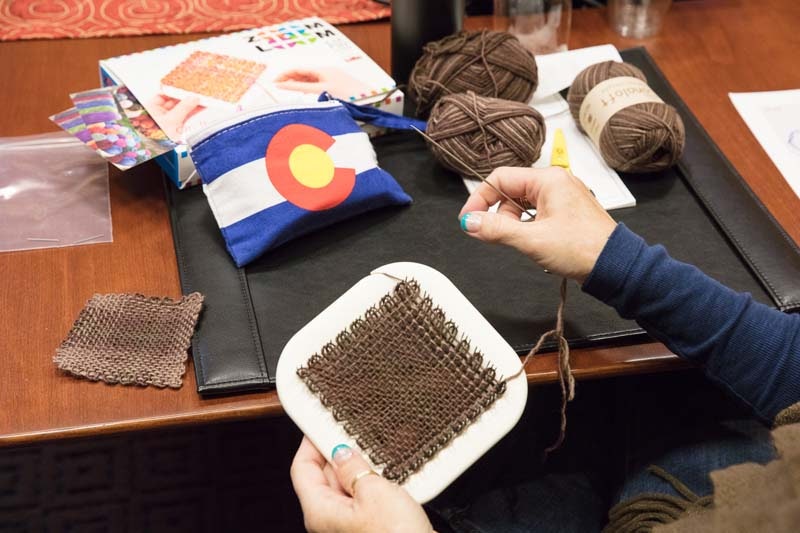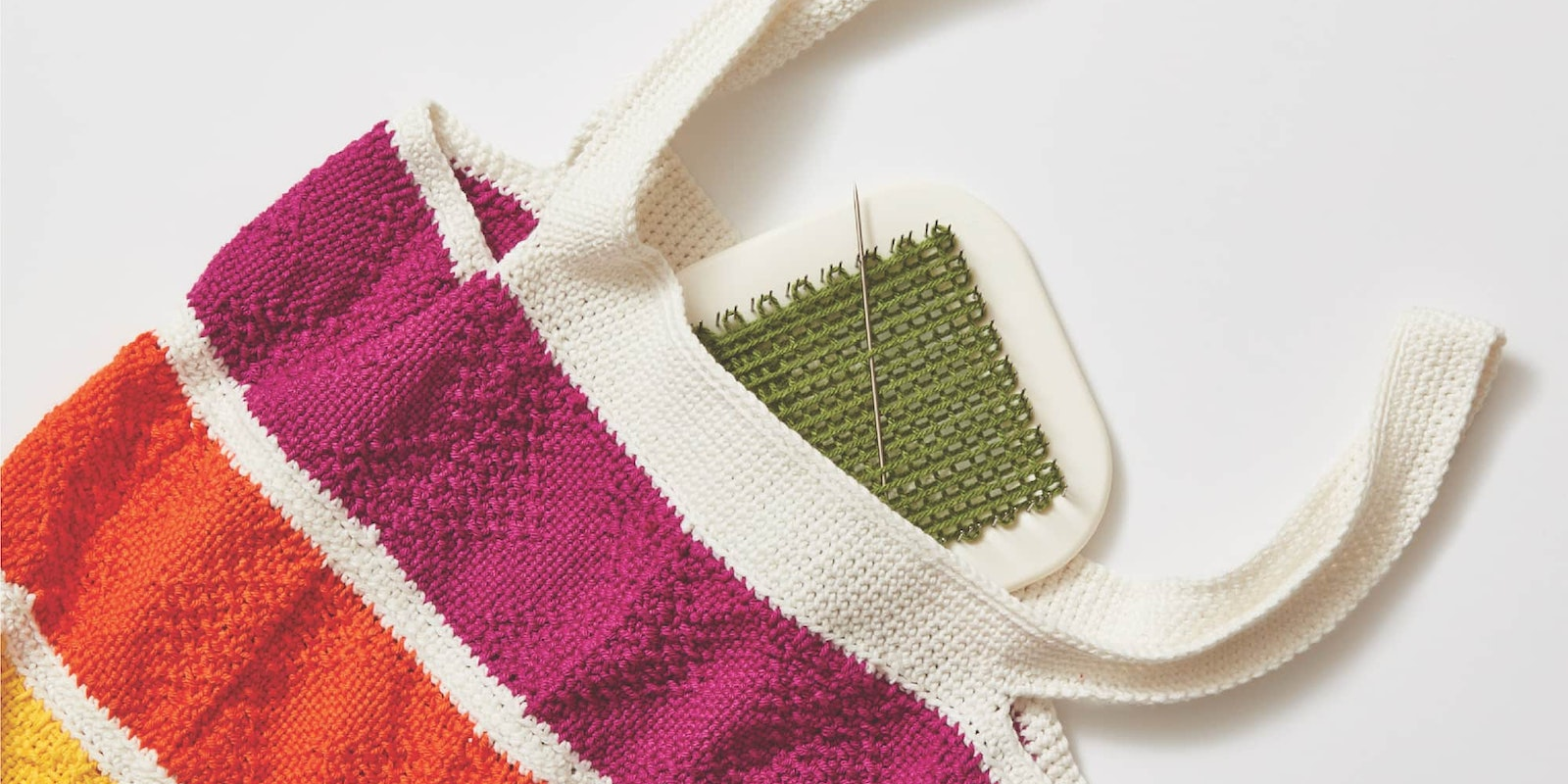You know those conversations you have with your friends sometimes about why and how some things came to be? I.e., “Who decided it was a good idea to eat an artichoke, and did they have mayonnaise?” or “I understand knitting but who figured out purling?” or “Why would someone think you could fold squares of paper into origami animals?” I have decided to add pin looms to that list of unanswerables: Why didn’t I discover them sooner? They are a simple and ingenious way to teach weaving concepts.
At a yarn fest years ago, Anne Merrow, then editor of Spin Off, asked me to help her teach a couple of short classes on pin-loom weaving for beginning weavers. I accepted readily, but I then I had to be honest and admit I had never actually woven on one before. For those of you in the same boat, pin looms are (surprisingly!) nothing at all like the potholder looms we used at summer camp.
Pin-loom weaving has 4 rounds or steps. Rounds 1–3 involve wrapping yarn around the pins—forming the warp and half the weft—and it isn’t until round 4 that you actually start weaving with a long weaving needle. Pin looms use lengths of yarn rather than the loopers of potholder looms.
 Pin Loom Weaving at Interweave Yarn Fest 2017. Photo by George Boe.
Pin Loom Weaving at Interweave Yarn Fest 2017. Photo by George Boe.
The wrapping rounds can be a little confusing. (Luckily for me, we were pin looms that were clearly marked with numbers and arrows to help with the wrapping.) I had woven a few squares before the classes, but to my embarrassment, I still had to consult the manufaturer booklet a couple of times to keep us all on the right track. Before long, however, everyone was going in the right direction, and the first 3 rounds were done.
Then actual weaving started and I saw people fall in love with weaving. There is something about any kind of weaving that is compelling. Maybe it’s the little bit of magic of seeing a length of thread miraculously turn into a piece of fabric. I would guess that of the 15 or so people who took these beginner classes, about 13 were on their way to the marketplace after class to buy their own pin loom.
Whatever kind of weaver you are, I encourage you to look at weaving on different looms from what you're used to, whether that means rigid-heddle, inkle, pin-loom, tapestry, multishaft weaving, or even card weaving. They all have their compelling points and often exploring one helps you better understand another. And would someone please tell me: why would anyone think that mixing eggs and oil would create mayonnaise? And, was it before or after the artichoke?
Weave well,
Susan

